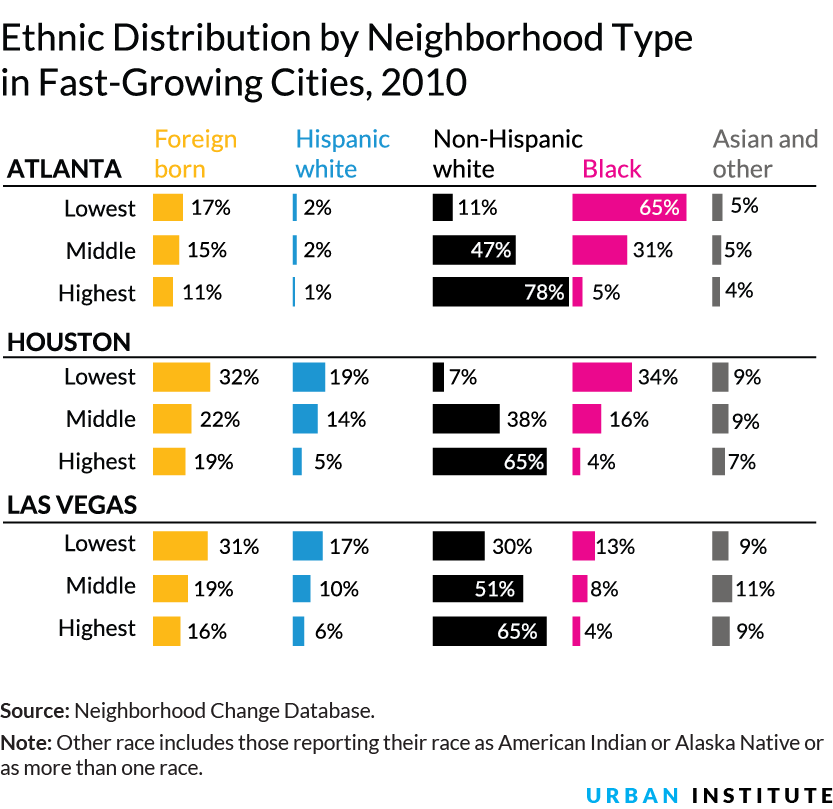Copy this code to embed graphic


<iframe src="http://datatools.urban.org/features/ncdb/immigrants-reshaping-residential-segregation/index-map.html" style="border:0px #FFFFFF none;" name="urban-iframe" scrolling="no" frameborder="1" marginheight="0px" marginwidth="0px" height="650px" width="100%"></iframe>
About this project


Using the Neighborhood Change Database, we looked at Census data on neighborhoods’ average household income, median house value, share of college degrees, and homeownership rate to determine their socioeconomic advantage. We then analyzed the most disadvantaged neighborhoods within each local area (those in the bottom 10 percent, or “lowest-SES” for the city) and the most advantaged (those in the top 10 percent, or “highest-SES” for the city) to map neighborhood inequality within communities.





